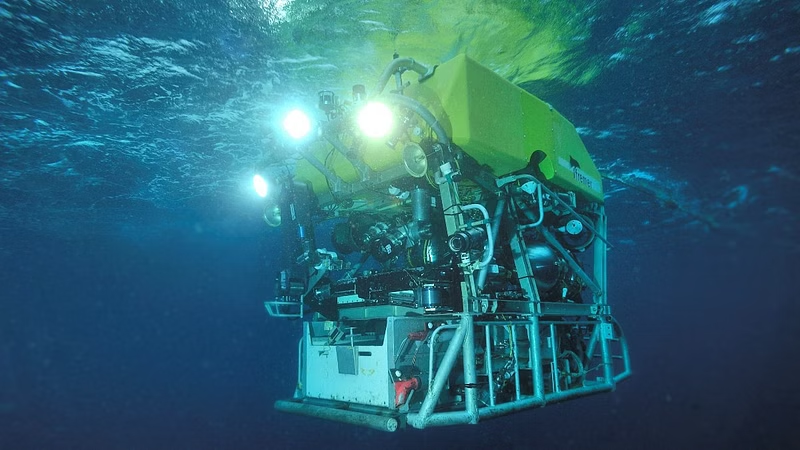Missing Titanic Submarine Found in Pieces from 'Catastrophic Implosion,' All Five Aboard Dead
In a tragic turn of events, the long-lost Titanic submarine, which disappeared during an exploration mission, has been located in a scattered state on the ocean floor. The submarine, commissioned to study the remains of the iconic RMS Titanic, met a devastating fate due to a "catastrophic implosion," claiming the lives of all five individuals aboard. This discovery has once again brought the legendary ship's history to the forefront, reminding the world of its enduring mysteries and the inherent dangers of deep-sea exploration.
The Titanic submarine, specially designed to withstand the extreme pressures of the deep ocean, embarked on its ambitious mission to explore the remnants of the Titanic, which sank over a century ago. Equipped with advanced technology and manned by a team of experienced researchers, the submarine descended to great depths in search of new insights into the tragic event.
After an extended period of silence, concerns were raised when the submarine failed to resurface as scheduled. A multinational search and rescue operation was initiated, deploying cutting-edge sonar systems and unmanned underwater vehicles to locate the missing vessel.
Recently, the painstaking search efforts bore fruit when the wreckage of the Titanic submarine was discovered in scattered pieces on the ocean floor. The tragic outcome was confirmed, with the retrieval of no survivors.
Preliminary analysis suggests that the submarine experienced a catastrophic implosion, a phenomenon caused by immense water pressure at great depths. The extreme forces exerted on the vessel overwhelmed its structural integrity, leading to its disintegration. The remains of the submarine lay strewn across the seabed, serving as a somber testament to the unforgiving nature of the deep ocean.
The five individuals aboard the ill-fated submarine, whose identities have been withheld pending notification of their families, were highly skilled professionals dedicated to marine exploration and the preservation of historical artifacts. Their untimely demise is a solemn reminder of the risks associated with venturing into the unknown depths of the sea.
Their contribution to the field of deep-sea exploration should not be forgotten. They were pioneers, driven by a passion for unraveling the mysteries of the past and expanding our understanding of historical events. Their sacrifice serves as a reminder of the perils inherent in these endeavors and the need for continued vigilance and safety measures.
The tragic loss of the Titanic submarine underscores the importance of thorough risk assessment, meticulous planning, and the implementation of stringent safety protocols in deep-sea exploration missions. The field of marine exploration will undoubtedly reassess its practices and implement enhanced safety measures to prevent similar incidents in the future.
While the discovery of the Titanic submarine in pieces brings sorrow to all those involved, it also renews our fascination with the enduring legacy of the RMS Titanic. The tragic tale of the "unsinkable" ship continues to captivate our collective imagination, serving as a poignant reminder of the fragility of human endeavors in the face of nature's might.
The discovery of the fragmented Titanic submarine, lost in the depths of the ocean, brings both sorrow and reflection. The catastrophic implosion that claimed the lives of all five individuals aboard underscores the risks and challenges inherent in deep-sea exploration. As we mourn the loss of these dedicated professionals, their tragic fate reminds us of the ongoing quest to unlock the mysteries of the past and the need for unwavering commitment to safety in our pursuit of knowledge beneath the waves.



Comments
Post a Comment